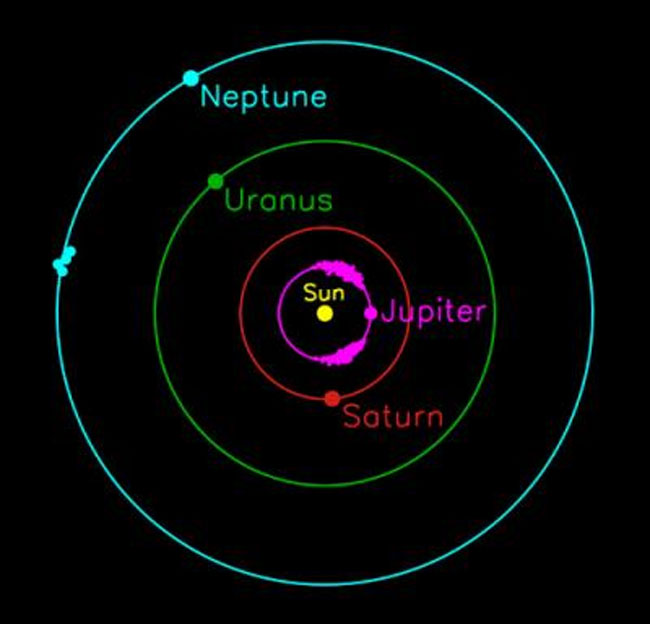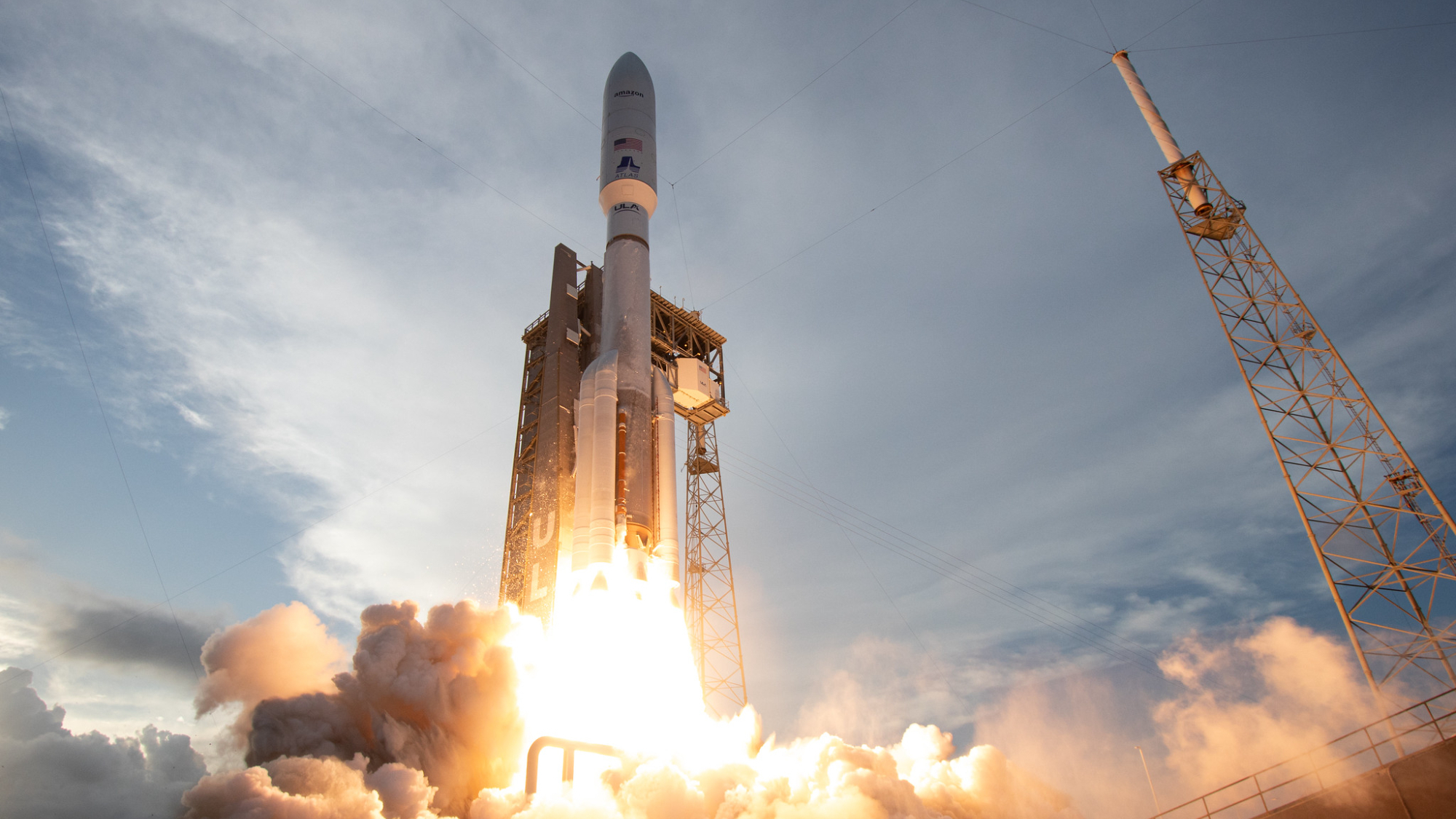Neptune Linked to Potential Swarm of Asteroids

Astronomershave detected three new rocky bodies which share the same orbit as Neptune asit travels around the Sun.
Thefinding, detailed in the June 16 issue of the journal Science, brings thetotal number of the gas giant's asteroid companions, or "Trojans," up to four.
The highlyinclined orbit of one of them supports the hypothesis that the Neptune Trojanswere captured from a much larger asteroid "cloud" that surrounds theplanet, and that they are not the broken remains of some larger object as somescientists have speculated.
TheTrojans gather around one of Neptune's two so-called "Lagrangian"points. In these regions--located 60 degrees in front of and behind the planetin its orbit--the Sun and Neptune's gravity combine to ensnare passing objects.
The orbitof one of the new Trojans is tilted about 25 degrees relative to the plane thatNeptune orbits the Sun, compared to only about 5 degrees for the other threeTrojans.
The way thesurvey was set up, it was very unlikely that such a highly inclined objectwould be detected. The fact that it was indicates that there are at least asmany--and possibly more--highly inclined Trojans existing far from the solarsystem plane compared to low inclination ones, said study team member ChadwickTrujillo of the Gemini Observatory Hawaii.
"TheNeptune Trojans are a thick 'swarm,' not a thin population confined to theplane," Trujillo told SPACE.com.
Breaking space news, the latest updates on rocket launches, skywatching events and more!
- Tally of Asteroids Harboring Moons Grows Beyond 30
- More Moons Around Earth? Its Not So Loony
- Asteroid Belt Like Ours Spotted Around Another Star
- Asteroids Data Sheet
Ker Than is a science writer and children's book author who joined Space.com as a Staff Writer from 2005 to 2007. Ker covered astronomy and human spaceflight while at Space.com, including space shuttle launches, and has authored three science books for kids about earthquakes, stars and black holes. Ker's work has also appeared in National Geographic, Nature News, New Scientist and Sky & Telescope, among others. He earned a bachelor's degree in biology from UC Irvine and a master's degree in science journalism from New York University. Ker is currently the Director of Science Communications at Stanford University.
